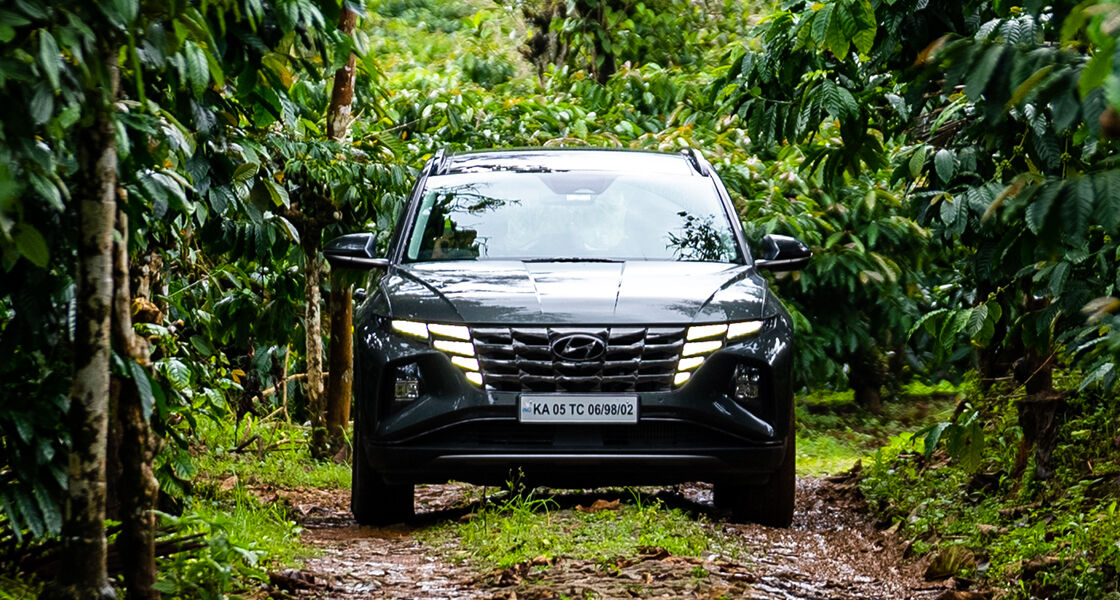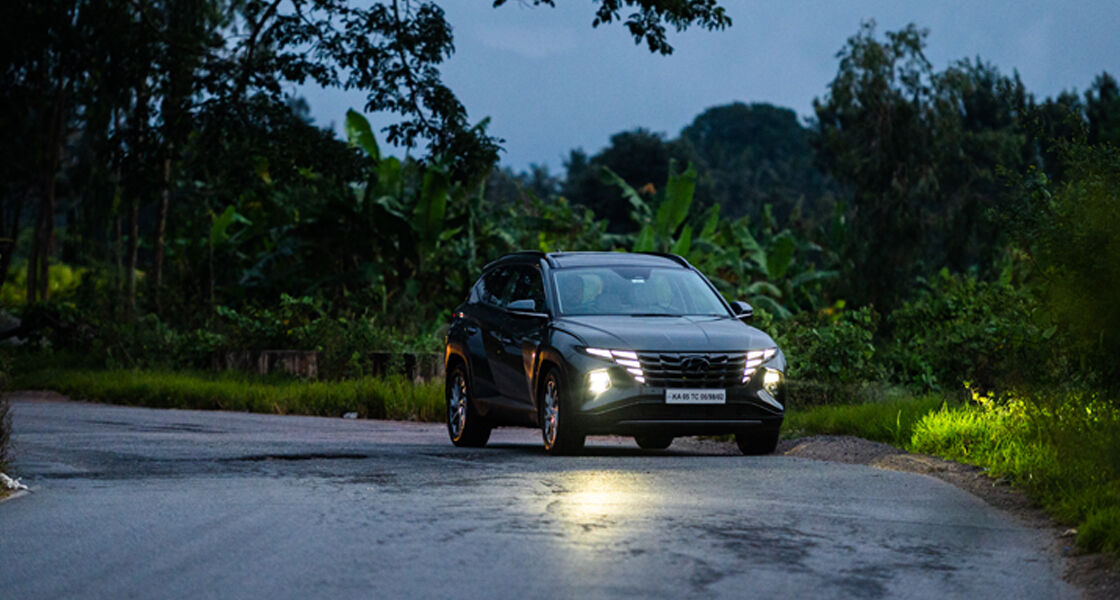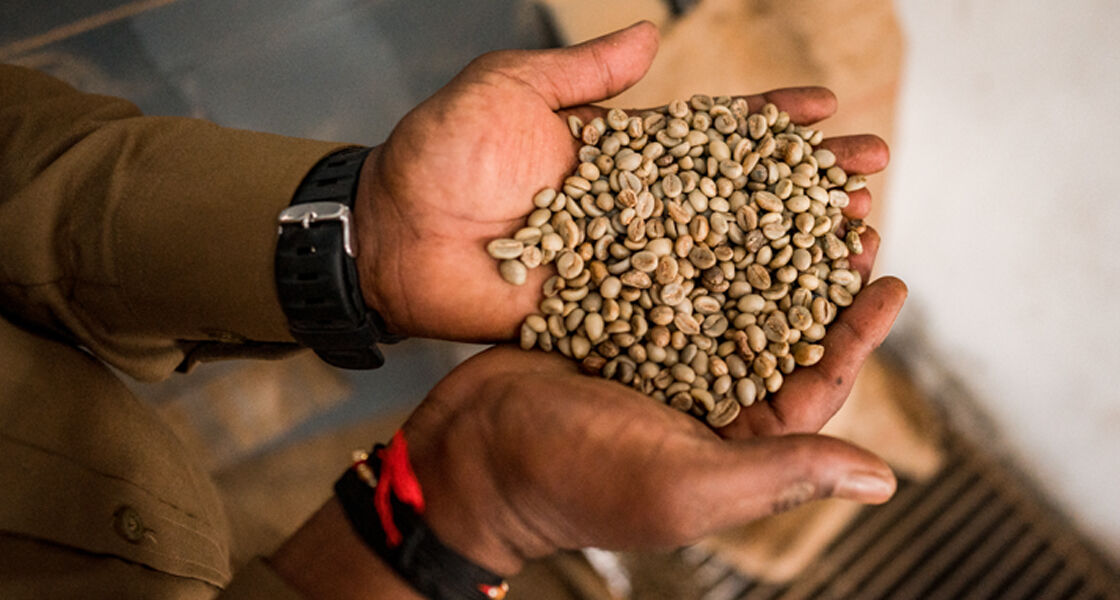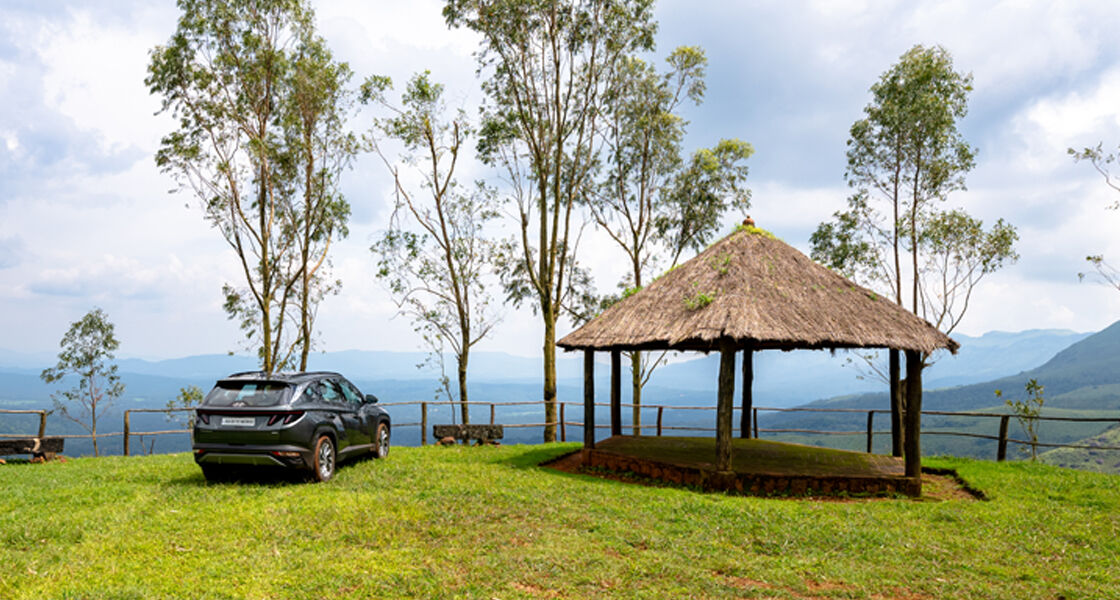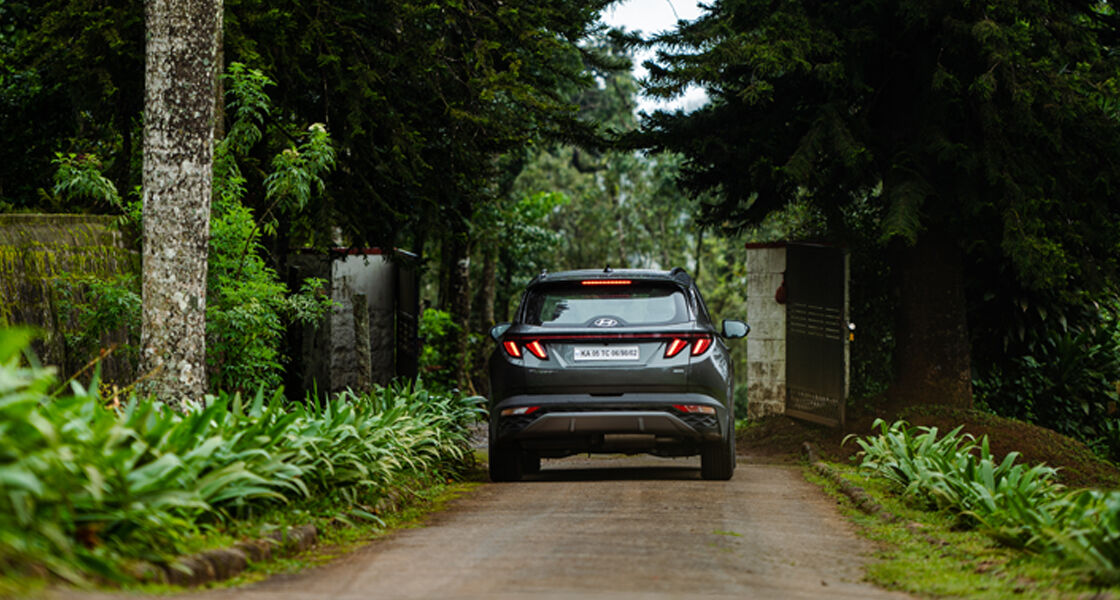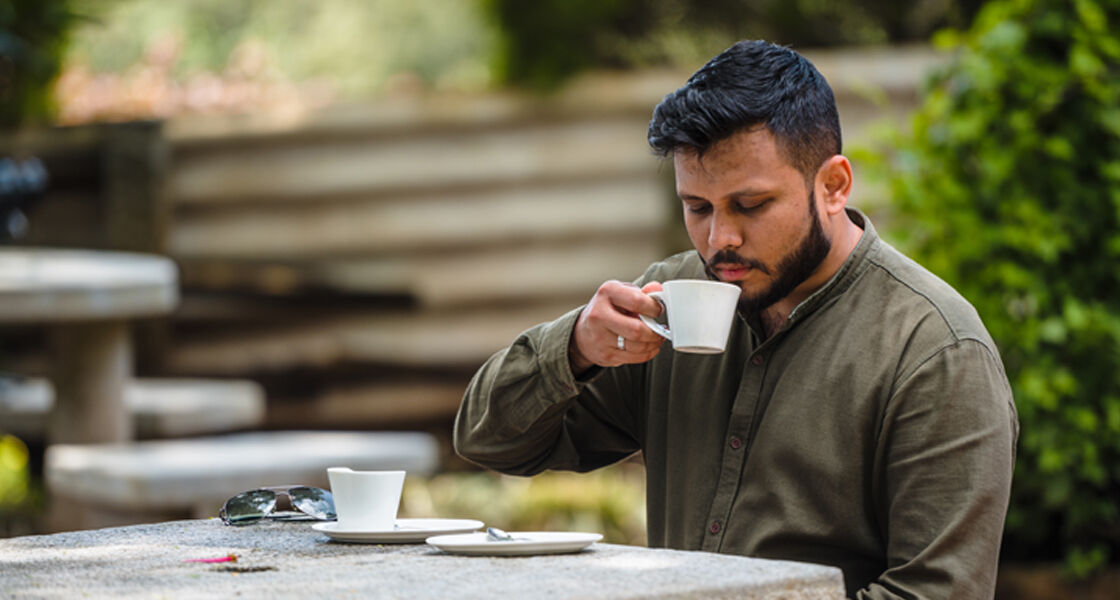From Bean to Cup: Chikkamagaluru
How far will you go for coffee—out of your bed to the bubbling moka pot in the kitchen, to your favourite café for that morning kick? The search for a perfect and flavourful start to the day sends some on an all-India road trip across the country’s top plantations.
All new Hyundai Tucson powers Suhas’ roadtrip as he zips through Chikkmagalur.
Peaberry coffee is the sought-after varietal for South Indian filter coffee.
Dusty roads, trodden paths and sandy bits break the concrete highways into colourful segments. The post-monsoon foothills of the Western Ghats give way to tiny pockets of bliss dotted with paddy crops, fruit orchards, pepper trails and tall coniferous forests of peeping silver oak. The drive to the estates, however, remains seamless with Hyundai’s SmartSense ADAS, which has features such as Lane Keep Assist and Blind Spot Monitoring. Multi-terrain modes make it easy to cruise through challenging terrains.
Suhas’ enthusiasm for consuming the beverage in its finest form is ardent as he drives for four days, zipping from Bangalore to Salawara Estate in Belur, through Hulikere Estate in Muthodi forest, Ratnagiri and Halli Berri plantations in the Baba Budan Giri hills, concluding at Blue Mountain estate. What I learn later, is that plantations within the same district can often account for stark flavour differences.
The Blue Mountain Estate affords panoramic views of the coffee valley.
The answer to what adds so much difference to a cup goes beyond the basic three flavour determiners—minerals of the soil, endemic species cohabiting the plantation space and seed varietals. The final magic in the cup is a romantic story of how a seed transforms into flushing red cherries and yields glossy beans that are the stuff that coffee connoisseurs’ dreams are made of. A beverage so pure and fulfilling brews out of a process that took years to master. Plantation owners and farmers carefully select saplings that spend three to five years growing into bushes, fruiting cherries. After harvesting the fruit annually (usually between October and February), each plantation owner processes the golden-maroon drops differently. Natural processing includes sun-drying the cherries after cleaning them which yields the boldest body and aftertaste, while washed coffees that grant the high acidity and intense aroma, go through a pulper that removes the mucilage (skin and fruit) before a short period of drying. A blend of the two outcomes is the semi-wash or honey processing where only the skin is removed before the drying stage. The stage after processing and drying is hulling, where green beans are sent to a dry mill where the parchment and defects are removed and then for roasting, to mark the final stage for a magnificent metamorphosis.
Each sip reveals a long history and workmanship behind the beverage. Chikkamagaluru’s flavours, as discovered, create a spectrum of their own while maintaining chocolatey, caramel notes. But despite holding on to a bag of beans in his possession, the obsession to uncover more about the tiny bean keeps him determined to drive on.
Suhas ends his quest for coffee with two luscious blends. Photos by: Siddharth Kejriwal
By Muskaan Gupta

